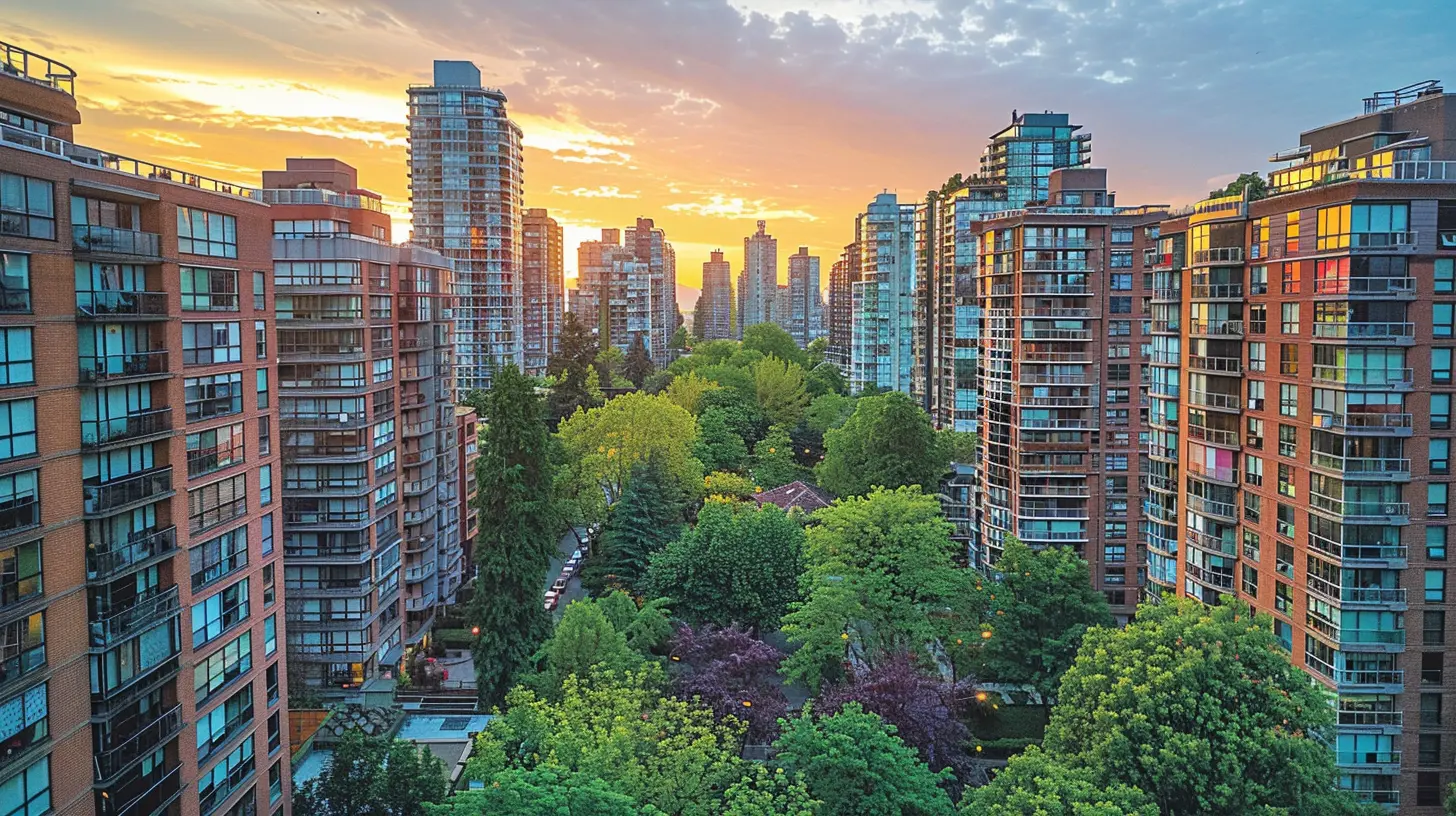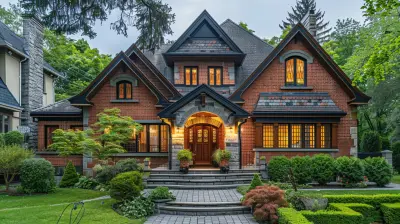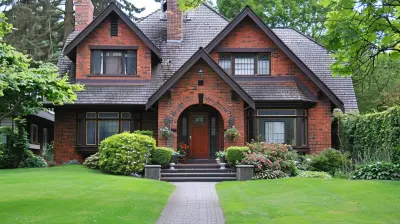How Urban Density Impacts Real Estate Investment Opportunities
16 April 2025
Urban density—sounds fancy, doesn’t it? But it’s really just a fancy term for how packed people are into a certain space, like sardines in a can. It’s no secret that cities are growing at a wild pace, with more people flocking to urban centers than ever before. Whether it’s for better job opportunities, a vibrant lifestyle, or access to amenities, urban areas are magnets for human activity. But what does it mean for real estate investors? Is it an opportunity-packed treasure chest, or does it come with strings attached?
Let’s dive into how urban density impacts real estate investment opportunities. Whether you’re a seasoned pro in the property game or someone dipping your toes in for the first time, there’s a lot to unpack—and a lot to gain.
Why Urban Density Matters in Real Estate
First things first—why should we even care about urban density? Well, it’s like the beating heart of any city. It determines how land use is optimized, how people live, and how businesses thrive. For investors, urban density creates a ripple effect on property values, rental demand, and even future development.Think about it: A densely populated area is buzzing with life. There’s constant demand for housing, offices, cafes, and even those quirky coworking spaces. But on the flip side, it can also mean challenges like overcrowding, scarce land, or skyrocketing property prices. You see, urban density is both the hero and the troublemaker in real estate.
The Link Between Urban Density and Property Value
Ever heard the saying “location, location, location”? In real estate, it’s gospel. Urban density amplifies this mantra tenfold. Areas with high population density often have services like public transport, hospitals, schools, and entertainment hubs all concentrated in one place. And you know what that does? It cranks up the property values.For instance, think about cities like New York, Tokyo, or London. These global giants are packed to the brim, and their real estate is some of the most sought-after (and costly) in the world. Why? Because convenience is king. People are willing to pay a premium to be close to work, amenities, and nightlife.
But here’s a plot twist: Too much density can also lead to problems like traffic congestion, increased pollution, and higher living expenses, which can dampen the charm of an area. So, as an investor, it’s all about finding that sweet spot—where density creates value without tipping into chaos.
Rental Demand and Urban Density: A Match Made in Real Estate Heaven
Here’s the deal: Urban density drives rental demand like a caffeine kick fuels a Monday morning. Densely populated areas attract a mix of people—young professionals, students, families, and even retirees—who are often looking to rent rather than buy. Why? Because renting in a city is usually more affordable and flexible.Picture neighborhoods with thriving job markets, trendy cafes, and walkable streets. Renters flock to these areas because they want to live where the action is. And for investors, this means a steady stream of tenants and reliable rental income.
But it’s not all rainbows and butterflies. High urban density can bring competition among landlords, meaning you’ll need to up your game to attract tenants. Think modern amenities, pet-friendly spaces, and solid property maintenance. It’s like running a mini-hotel—your renters are your guests, and their satisfaction matters.
Urban Density and Real Estate Development Opportunities
Now, let’s talk about real estate development. Urban density can be a goldmine for developers, but it’s not without hurdles. In highly dense areas, land is scarce and every square foot counts. This is where creative solutions like vertical construction and mixed-use developments come into play.High-rises, for instance, are the poster child of dense urban areas. They offer housing, office spaces, and sometimes even retail spaces all in one towering structure. But here’s a question: How do you make a tall building feel like home? Developers have to think about things like green spaces, natural light, and sustainable construction to attract buyers or renters.
Mixed-use developments are another win-win in dense areas. Imagine a building that combines apartments, office spaces, a gym, and a grocery store. You don’t even need to leave the block! It’s convenient, efficient, and hugely appealing to urban dwellers. For investors, these properties often promise high returns because they cater to multiple needs in one go.
Risks Investors Should Watch Out For
Alright, we’ve hyped up urban density quite a bit, but let’s not ignore the elephant in the room—it comes with risks too. Overcrowding, for instance, can stress infrastructure. Think about clogged transport systems or overburdened utilities. These can hurt property values if not managed well.Regulatory hurdles are another potential snag. In dense urban areas, zoning laws and building codes are often stricter. You might need extra permits or face certain restrictions on how you can develop or use a property.
Lastly, there’s always the financial risk of entering a high-demand market. Prices in dense urban areas tend to be steep, and competition is fierce. It’s not uncommon for investors to overestimate returns or underestimate costs, which can lead to financial strain.
Does that mean you should shy away? Not at all. It just means you’ll need to do your homework—think feasibility studies, market research, and solid budgeting—to make smart decisions.
The Role of Smart Urban Planning
Urban density isn’t going away—it’s actually rising as cities grow. And here’s the good news: Smart urban planning is stepping in to make density work for everyone. Cities are increasingly investing in efficient public transport, green spaces, and eco-friendly buildings to improve the quality of life in dense areas.For investors, this is a crucial factor to consider. Properties near well-planned infrastructure or sustainable developments are likely to see significant appreciation in value. So, if you’re scouting for the next big opportunity, keep an eye on how cities are handling their urban growth.
Tips for Smart Investment in High-Density Areas
So, you’re sold on the idea of investing in high-density urban areas? Great choice! But before you dive in, here are some quick tips to keep in mind:1. Do Your Homework: Research population growth, infrastructure plans, and economic activity in the area. The more you know, the better.
2. Think Long-Term: High-density areas often see steady appreciation over time, but patience is key. Don’t expect overnight success.
3. Diversify: Don’t put all your eggs in one basket. Consider a mix of residential, commercial, and mixed-use properties to spread out your risk.
4. Partner Smartly: Collaborating with experienced developers or real estate agents can give you an edge in competitive and complicated markets.
5. Prioritize Sustainability: Green buildings and energy-efficient spaces are in demand and could give your investment an extra boost.
Wrapping It Up
Urban density isn’t just a buzzword or a random statistic—it’s a game changer for real estate investment. Yes, it comes with its own set of challenges, but the opportunities far outweigh the drawbacks. From skyrocketing property values to high rental demand and innovative development options, dense urban areas are brimming with potential.The trick? Approach it strategically. Look for that sweet spot between demand and livability, stay informed about urban planning trends, and always be ready to adapt. The city may be crowded, but there’s always room for smart investors like you.
all images in this post were generated using AI tools
Category:
Urban LivingAuthor:

Lydia Hodge
Discussion
rate this article
6 comments
Amanda Carrillo
Urban density is a game-changer for real estate investment. It drives demand, boosts property values, and fosters vibrant communities. Investors must adapt to capitalize on these emerging opportunities.
May 1, 2025 at 6:42 PM

Lydia Hodge
Absolutely! Urban density not only enhances property values but also creates dynamic communities, making it essential for investors to embrace these trends for optimal returns.
Zethryn Bryant
Urban density is a double-edged sword in real estate investment. While it can drive demand and increase property values, it also intensifies competition and affordability challenges. Savvy investors should focus on understanding local dynamics, embracing innovative solutions, and recognizing the long-term potential in well-planned, dense environments.
April 26, 2025 at 4:21 AM

Lydia Hodge
Thank you for your insightful comment! You’ve captured the complexities of urban density well, highlighting both its opportunities and challenges for real estate investors. Understanding local dynamics is indeed key to leveraging these potential benefits.
Carter McConkey
Great insights! Understanding urban density is vital for making informed real estate investment decisions.
April 21, 2025 at 4:25 AM

Lydia Hodge
Thank you! I'm glad you found the insights valuable. Urban density indeed plays a crucial role in shaping investment strategies.
Zevran Phillips
Urban density: where you can invest in a cozy studio that feels like a luxury tent, and the nearby coffee shop doubles as your new office. Cheers to city living!
April 20, 2025 at 11:57 AM

Lydia Hodge
Absolutely! Urban density not only enhances accessibility to amenities but also fosters unique living experiences that can elevate investment potential. Cheers to a vibrant city lifestyle!
Jinx McFadden
This article effectively highlights the complexities of urban density and its influence on real estate investments. Understanding how population density affects demand and property values is crucial for making informed investment decisions. Great insights!
April 18, 2025 at 11:49 AM

Lydia Hodge
Thank you for your thoughtful comment! I'm glad you found the insights valuable for understanding urban density's impact on real estate investments.
Simon McClure
Great insights on urban density! Understanding its influence on real estate can help investors make informed decisions. Exploring infrastructure, amenities, and market trends in dense areas can uncover hidden opportunities.
April 16, 2025 at 8:14 PM

Lydia Hodge
Thank you! I’m glad you found the insights valuable. Understanding urban density is indeed crucial for identifying real estate opportunities.




